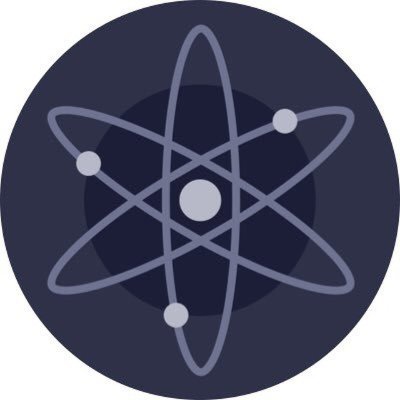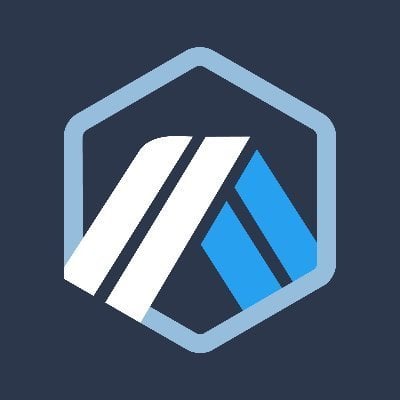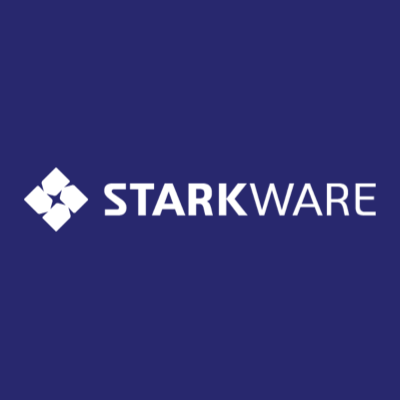Can Layer 3 bring about a huge explosion in the application chain ecosystem?
Author: Cynic, LK Venture
TL;DR
1. From Layer1 to Layer2
- How is scaling technically achieved? Ethereum regards Rollup as the only Layer2 solution because it expands Ethereum without sacrificing decentralization and security. From a modular perspective, Layer2 is responsible for execution, while settlement, consensus, and data availability are handled by Layer1.
2. From Layer2 to Layer3
- What is the difference between Layer2-Layer3 and Layer1-Layer2? Although Rollup technology addresses Ethereum's computational bottleneck, it does not solve the data availability issue. The upper layer needs to compress transaction data to pass it to the lower layer, but compression cannot be repeated, so Layer2-Layer3 performance does not significantly improve.
- Why do we still need Layer3 with Layer2? Layer2 maintains decentralization and serves as a general computation layer, providing composability, while Layer3 should act as application-specific chains to meet the unique needs of different applications, such as compatibility, efficiency, and privacy.
- How does Layer3 differ from Cosmos in the application chain ecosystem? Layer3 relies on the Ethereum ecosystem, making it easier to acquire users and funds, but due to its high binding with Ethereum, it also loses some sovereignty, such as token value capture.
3. From Layer3 to LayerX?
- Current development status of Layer3: Arbitrum launched Orbit Chain on June 22; zkSync announced on June 26 that it would launch ZK Stack in a few weeks; the Madara of the Starknet ecosystem has already helped a project deploy a Starknet Layer3 application chain within 24 hours during a hackathon.
- With Layer3 here, how far are Layer4 and Layer5? LK Venture believes that, from a technical principle perspective, Layer3 can no longer achieve performance leaps through simple stacking. Although the ecological connections between Layer1, Layer2, and Layer3 are tight (Ethereum ecosystem), and interoperability is stronger than traditional heterogeneous chains (cross-chain is cheaper), complete ecological inheritance is still not achievable. The narrative of Ethereum's scaling may end at Layer3.
From Layer1 to Layer2: Scaling
There exists an impossible triangle in blockchain, where security, decentralization, and scalability cannot be achieved simultaneously. Ethereum has chosen the first two, while support for the latter is insufficient. A swap on Ethereum typically incurs a gas fee of $3-$4, and during high transaction volumes in a bull market, a single swap can cost nearly $100, leading to severe congestion.
Despite the emergence of many new public chains focusing on scalability since 2018, Ethereum still holds an absolute dominant position in the market, prompting attention towards scaling solutions built on Ethereum.
The widely used solutions include sidechains, Validium, and Rollup, each with different trust assumptions.
- Sidechains operate independently of Layer1, connecting to the Ethereum mainnet via a two-way bridge. Sidechains can have separate block parameters and consensus algorithms, allowing efficient transaction processing, but they do not inherit Ethereum's security properties.
- Validium uses off-chain data availability and computation, processing transactions off-chain to improve throughput, and publishes zero-knowledge proofs on-chain to verify off-chain transactions for security.
- Rollup performs computation off-chain but uses Layer1 as a data availability layer, verifying through the submission of fraud proofs or validity proofs to Layer1 smart contracts, inheriting Ethereum's security.
Ethereum regards Rollup as the only Layer2 solution because it expands Ethereum without sacrificing decentralization and security. From a modular perspective, Layer2 is responsible for execution, while settlement, consensus, and data availability are handled by Layer1.

Based on the type of proof submitted, Rollup can be divided into Optimistic Rollup and ZK Rollup.
For Optimistic Rollup, Rollup batches execute transactions and sends the batch of transactions, pre-execution state, and post-execution state to the Rollup contract deployed on Layer1. Layer1 does not verify the state transition process; as long as the initial state submitted by Rollup matches the one stored in the Layer1 contract, it optimistically transitions the state to the new state submitted by Rollup. Fraud prevention is ensured through fraud proofs, where during a dispute period, other validators can challenge the state root and send fraud proofs to the Layer1 Rollup contract. This will revert the Rollup state to a confirmed state before the dispute and recalculate the valid state, punishing validators based on the results. In practice, fraud cases are rare, so optimistic state transitions save significant verification resources.

The difference between ZK Rollup and Optimistic Rollup is that state transitions require verification, not by the Layer1 Rollup contract, but by validating the validity proof within the contract. Once verification is complete, the state transition immediately achieves finality without waiting for a lengthy dispute period.
Among projects using Optimistic Rollup technology, the most mature are Arbitrum and Optimism, both of which have launched on the mainnet. Arbitrum has implemented fraud proofs, but only for whitelisted submissions, while Optimism's fraud proofs are still under development. Both are actively promoting decentralization processes, including the decentralization of sequencers and validators. According to data from L2Beat, as of June 26, 2023, the TVL of Arbitrum One and Optimism was $5.81B and $2.25B, respectively. Other projects using Optimistic Rollup technology include Boba Network, Zora Network, Layer2.finance, Fuel, BNBOP, Coinbase, etc., some of which are developed using the OP Stack open-sourced by the Optimism team.
Among projects using ZK Rollup technology, the main ones supporting virtual machines are zkSync Era, StarkWare, Polygon zkEVM, etc., which are currently live on the mainnet with TVLs of $618M, $68.11M, and $42.65M, respectively. Projects that only support specific types of transactions include dydx, Loopring, zkSync Lite, etc., with TVLs of $350M, $98.47M, and $97.69M. The current development direction of ZK Rollup is better Ethereum compatibility, with zkEVM projects like Taiko, Scroll, Linea, etc., under development.
From Layer2 to Layer3: Customization
Layer2: 100x, Layer3: 100x²=10000x?
From Layer1 to Layer2, costs are reduced to 1/100. So it is natural to think that performing the same operations on Layer2 to build Layer3 would reduce costs to 1/10000. Unfortunately, the answer is negative.
Rollup indeed solves Ethereum's computational issues by moving execution off-chain: L1 nodes no longer need to execute every transaction in a batch to verify the correctness of state transitions. Thanks to recursive proof techniques in cryptography, computation can recursively achieve unlimited performance; however, data availability cannot be stacked. Layer2 needs to submit the packaged transaction data to Ethereum's smart contracts in the form of calldata. Although the packaged transaction data is compressed, it cannot be compressed again using the same method. The transaction data of Layer3 ultimately also needs to be submitted to Layer1 (otherwise it cannot inherit security), but the degree of compression for transactions cannot be lower, so data availability cannot achieve cost reduction through stacking.
Therefore, Layer3 cannot follow the simple stacking path. The solution proposed by the StarkWare team is customization, allowing Layer3 and Layer2 to undertake different functions.
Why do we still need Layer3 with Layer2?
Ethereum provides security and decentralization, while Layer2 offers scalability, which can be said to solve the blockchain trilemma. Why do we still need Layer3?

The concept of Layer3 was first proposed by the StarkWare team in the article “Fractal Scaling: From L2 to L3”. The StarkWare team believes that this hierarchical structure and encapsulation idea is the core essence that maintains vitality in computer science. Furthermore, the Layer2 virtual machine will maintain decentralization, serving as a general computation layer providing composability, while Layer3 should act as application-specific chains to meet the unique needs of different applications. Turing completeness lays a good foundation for hierarchy; once Turing completeness is achieved, it theoretically allows for the creation of any possible application.
In practice, Layer2 must make some trade-offs to maintain its generality and cannot meet all application needs. The most direct manifestation is that StarkWare developed the Cairo language and CairoVM for more efficient proof generation, which is not compatible with Ethereum; at this point, a Layer3 chain can solve its security.
Possible Layer3 use cases include:
- Compatibility: Implementing an interpreter for other languages on Layer2's virtual machine to be compatible with other virtual machines.
- Efficiency: If an application pursues ultra-high TPS (e.g., games, social), it can consider relinquishing some security and using Validium solutions for settlement on Layer2; applications can also customize transaction formats according to their needs to achieve higher compression rates.
- Privacy: Building a dedicated privacy chain that settles on Layer2 but cannot be publicly observed.
Additionally, since application chains are specialized, they will not be directly affected by other applications, making the chain's performance and cost relatively certain. Moreover, bridging transactions do not need to be sent directly on Layer1, reducing costs, and bridging between L2-L3 and L3-L3 is cheaper. In batch submitting transactions, Layer3 has a significant advantage: the fixed gas required for submitting a batch of transactions is lower, eliminating the need to wait a long time for more transactions to be submitted together to lower average gas, significantly alleviating the dilemma between confirmation time and cost present in Layer2.
How does Layer3 differ from Cosmos in the application chain ecosystem?
Cosmos can be said to be one of the earliest projects to propose the concept of application chains. Through the Cosmos SDK, users can easily customize and issue their own application chains. Cosmos IBC is even comparable to the TCP/IP protocol in the internet, providing native interoperability for application chains built using the Cosmos SDK. In simple terms, Cosmos's vision is to build a blockchain universe where thousands of chains are interconnected.
Layer3 has also put significant effort into interoperability. Due to the same technical architecture and low transaction costs, cross-chain interactions between Layer3 will feature trustlessness, speed, and low costs, leading to the belief that liquidity between Layer3 is shared. From the perspective of interoperability, the functionalities brought by Layer3 and Cosmos are almost identical.
The LK Venture research team believes that the biggest difference between Layer3 and Cosmos lies in its binding with the Ethereum ecosystem, which is both an advantage and a disadvantage.
Regarding advantages, it mainly lies in the vast liquidity and user base of the Ethereum ecosystem.
Although Cosmos has powerful technology and is the first choice for many giants to launch chains, it still cannot escape the fate of low market share. According to data from DeFiLlama, as of June 26, 2023, Ethereum's TVL was $26.2B, while the entire Cosmos ecosystem combined was only nearly $1B. For Layer3 to succeed, the Ethereum ecosystem is a key factor.
Regarding disadvantages, it mainly lies in the high binding with Ethereum, resulting in the loss of some sovereignty.
For projects using Cosmos chains, the token model is entirely designed by the project team according to their needs, providing strong token empowerment. However, the native tokens of Layer3 chains will be subject to Ethereum's limitations. Although project teams can empower the native tokens as gas tokens, it cannot be denied that the transaction data ultimately submitted to Ethereum consumes $ETH. Therefore, if the gas token used is not $ETH but the project's own issued native token, the project team needs to continuously exchange the native token for $ETH to submit, ultimately transferring empowerment back to $ETH.
Another characteristic of Layer3 is that anything done on Layer3 can actually be migrated to Layer2, depending solely on the choice of the DA layer.
If the Layer2 that Layer3 relies on for settlement experiences a security breach or a decline in activity, Layer3 can migrate to another Layer2 at low cost or even directly rely on Layer1 for DA and settlement, effectively becoming Layer2. Due to its high binding with the Ethereum ecosystem, Layer3 may give rise to numerous innovative plays.
Prospects from Layer3 to LayerX
Current Development Status of Layer3
On June 22, Offchain Labs released tools for issuing Arbitrum Orbit Chain. Orbit Chain is a Layer3 built on Arbitrum Layer2, allowing users to choose one of three Layer2s for settlement, including Arbitrum One, Arbitrum Nova, and Arbitrum Goerli. Users can choose to use Rollup or Anytrust technology, with the difference being that Anytrust uses DAC and does not require submitting transaction data on-chain, making it cheaper but slightly less secure. The advantages of Orbit Chain lie in its simple chain issuance process, interoperability with the Arbitrum ecosystem, instant updates of Nitro, and EVM+ compatibility provided by Stylus (supporting Rust, C, C++, running on WASM virtual machine). Users can customize and issue any Orbit Chain without needing authorization from Offchain Labs or Arbitrum DAO, provided they settle on Arbitrum Layer2.
On June 26, zkSync published an article claiming that it would modify existing open-source code in the coming weeks to launch ZK Stack, allowing users to customize and build their own ZK superchains. Unlike Arbitrum's Orbit Chain, ZK Stack emphasizes sovereignty and interoperability, allowing users to fully customize based on their needs, and chains built using ZK Stack can achieve bridge-less interoperability. ZK Stack can be used to build both Layer2 and Layer3, and the official has not imposed any restrictions, nor required settlement on zkSync. From this perspective, the sovereignty provided by ZK Stack seems stronger.
As the team that first proposed the concept of Layer3, StarkWare is also vigorously cultivating the development of Layer3 within its Starknet ecosystem, with Madara testing for public-facing Stack. During the @PragmaOracle hackathon, a team utilized Madara to complete the issuance of an application chain within 24 hours. However, due to Starknet's unique zk-STARK proof technology, which is relatively immature, it may require more development time to refine the product before publicly releasing Starknet Stack.
The current Layer3 ecosystem is still in its early stages, but with the launch of convenient chain issuance tools for various Layer2s, it is believed that Layer3 will soon be officially operational. As infrastructure gradually improves, how to attract users has become the primary concern for all chains.
With Layer3 here, how far are LayerX?
From a technical principle perspective, Layer3 can no longer achieve performance leaps through simple stacking. Of course, Layer3 can gain specific advantages through customization, but the loss of generality will make further stacking difficult. While this hierarchical stacking can theoretically continue indefinitely, the LK Venture research team believes that currently, this stacking cannot meet any demands and will lead to a geometric increase in system complexity.
Most importantly, although the ecological connections between Layer1, Layer2, and Layer3 are tight (Ethereum ecosystem), and interoperability is stronger than traditional heterogeneous chains (cross-chain is cheaper), complete ecological inheritance is still not achievable. Contracts deployed on Arbitrum One cannot be directly called on Orbit Chain; the liquidity of DEX deployed on zkSync cannot be directly aggregated to ZK Stack.
The current situation is that the marketplace has been built and is growing taller, but there are not many vendors and customers. Although the ground floor is crowded with merchants (Ethereum), people are still reluctant to shop in the higher floors because the number of vendors on the upper floors is not as many as on the lower floors.
Therefore, the LK Venture research team believes that before blockchain technology achieves large-scale applications, Layer3 is unlikely to gain a high user volume. As for Layer4, Layer5… LayerN, even if there are specific needs for certain applications, it is believed that they will not promote themselves under the banner of LayerN.
As the ancient saying goes: "The Dao produces one, one produces two, two produces three, and three produces all things." The narrative of Ethereum's scaling may end at Layer3? It may still take time to verify.














